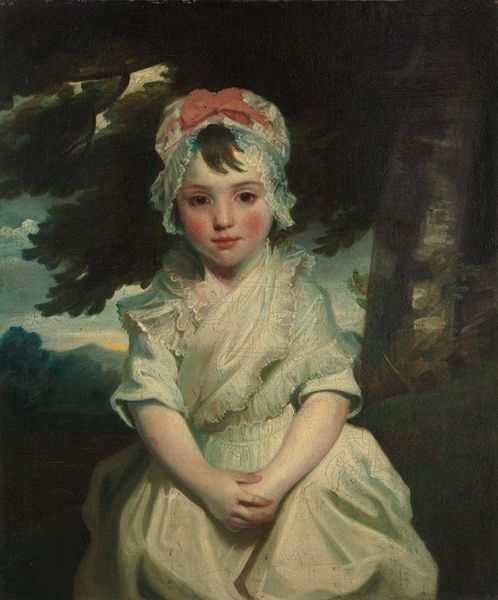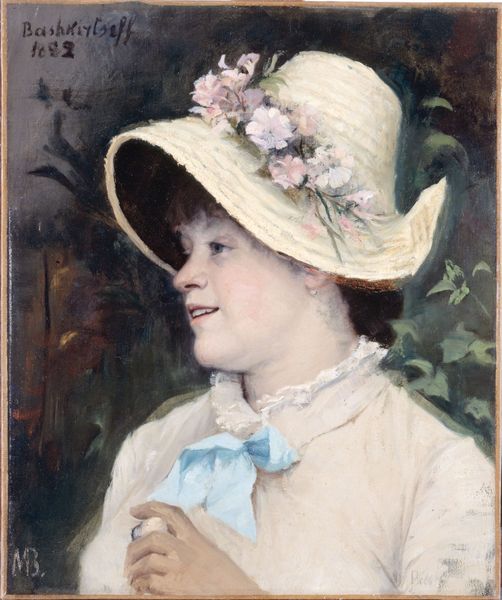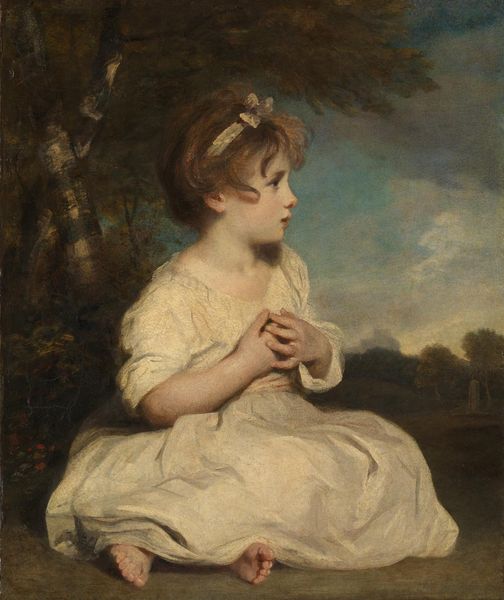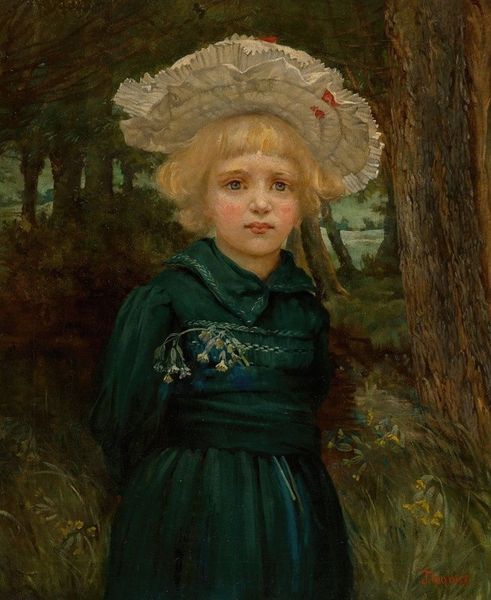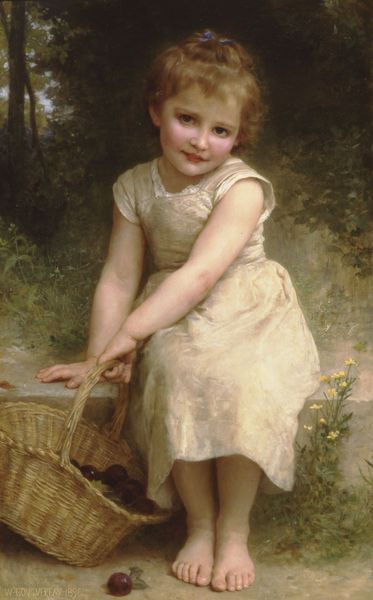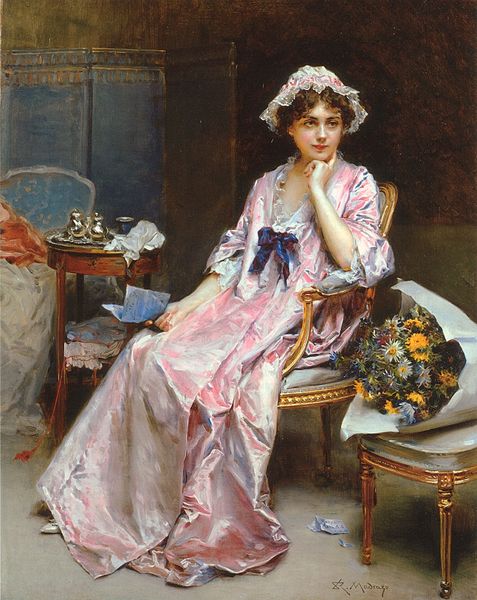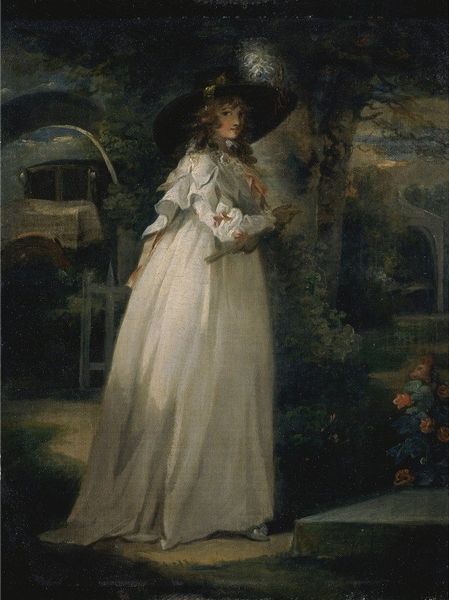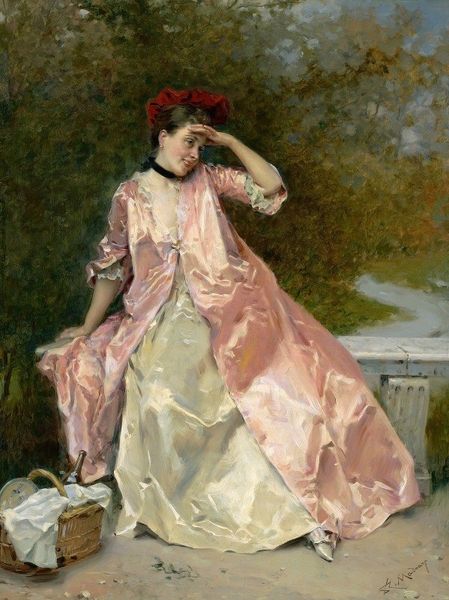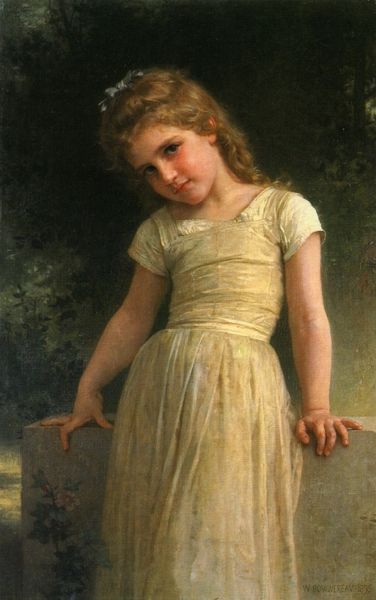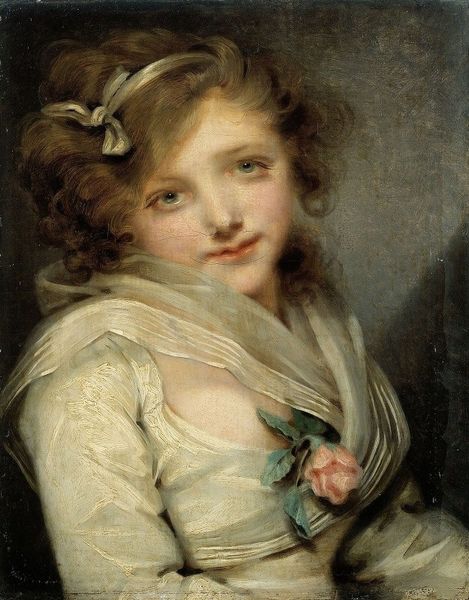
Dimensions: 103.5 x 74.5 cm
Copyright: Public domain
Editor: Here we have Sir John Everett Millais's "Pomona," painted in 1882 using oil paints. There's something quite enchanting about it. It feels very staged, yet there's also a simplicity in the way the artist captures this young girl and her apples. How would you interpret this work? Curator: The appeal of "Pomona" lies in its layering of meaning. Millais invokes classical mythology with his title – Pomona being the Roman goddess of fruit trees, gardens, and orchards – but places her in a very Victorian, genre-like scene. Notice how the apples themselves function as symbols of temptation and knowledge. Do you see an interplay between innocence and nascent maturity in the young girl's gaze? Editor: I hadn't thought of the apple as that kind of direct reference, but that makes sense. It is not just about a cute little girl with a fruit. She does look quite self-aware... Is it maybe about the cultural idea of a woman's transition into adulthood, as symbolized by this association with Pomona? Curator: Precisely! And think about the Pre-Raphaelite movement that Millais belonged to. They sought to revive the supposed purity of early Renaissance art but filtered it through their own Victorian sensibilities. The fruit is both abundant, echoing the original garden and also foreshadowing temptation. The choice of the apple implicates our Pomona in cultural ideas of beauty, desire, and of women's perceived role to tempt and destroy. Millais paints it to reveal his era and to create this sense of memory embedded in an apparently innocent image. Editor: That really reframes the work for me. It's far more complex than it appears at first glance. Thank you for drawing attention to all of that! Curator: Indeed, that’s the beauty of engaging with art, isn't it? Seeing how a single image can hold so much history, culture, and emotional depth, continuing through centuries!
Comments
No comments
Be the first to comment and join the conversation on the ultimate creative platform.
